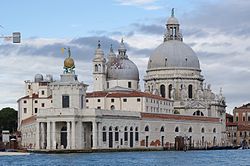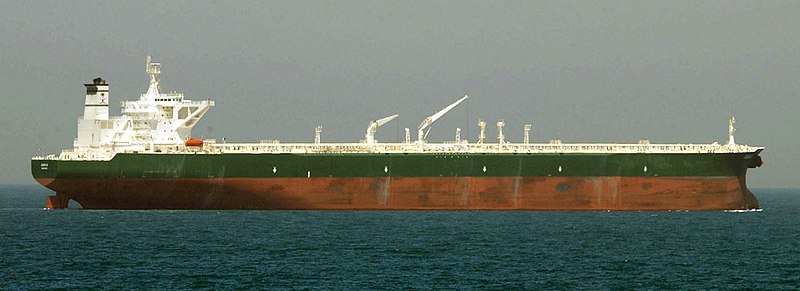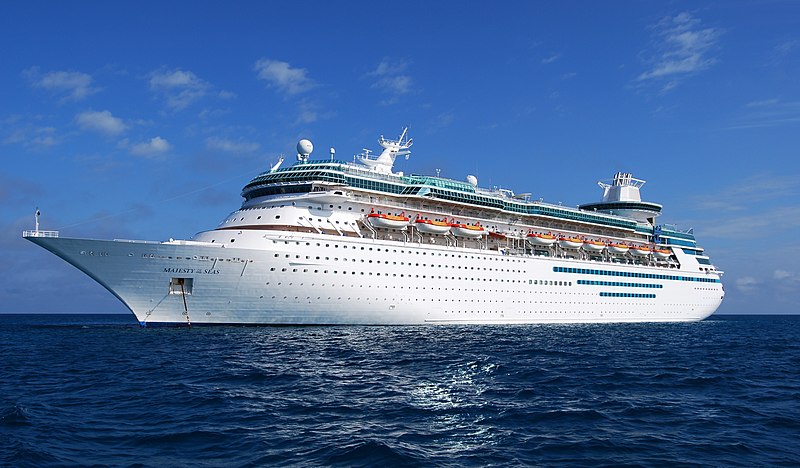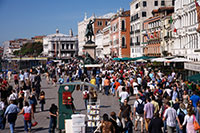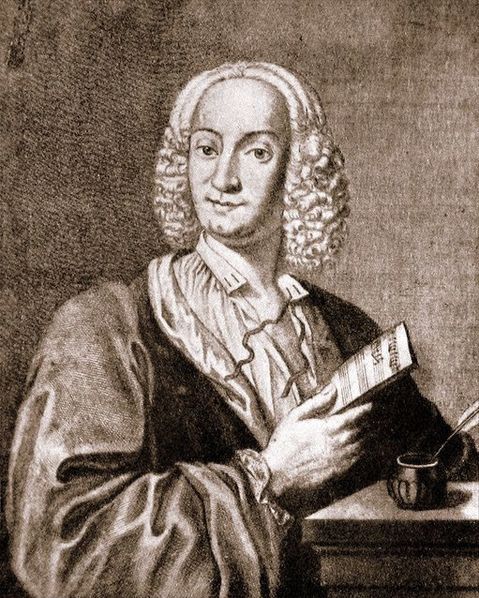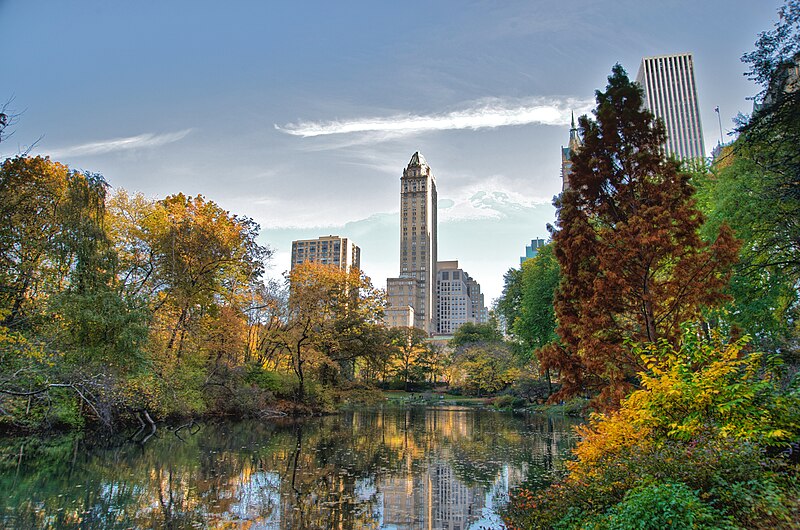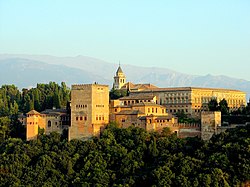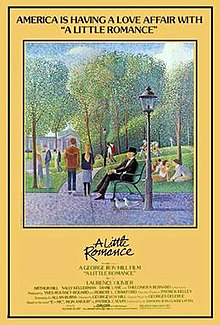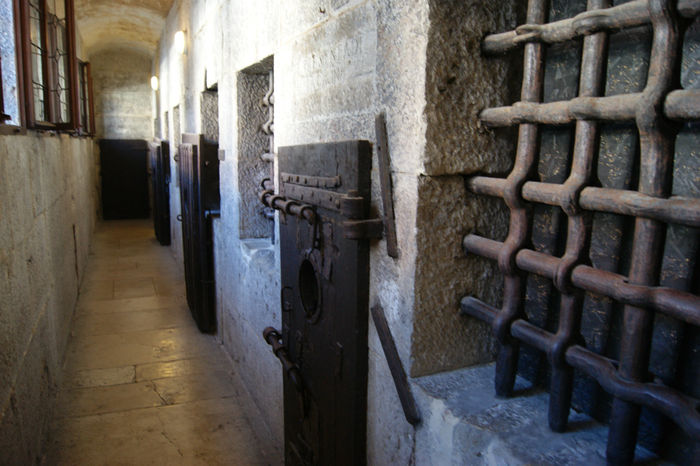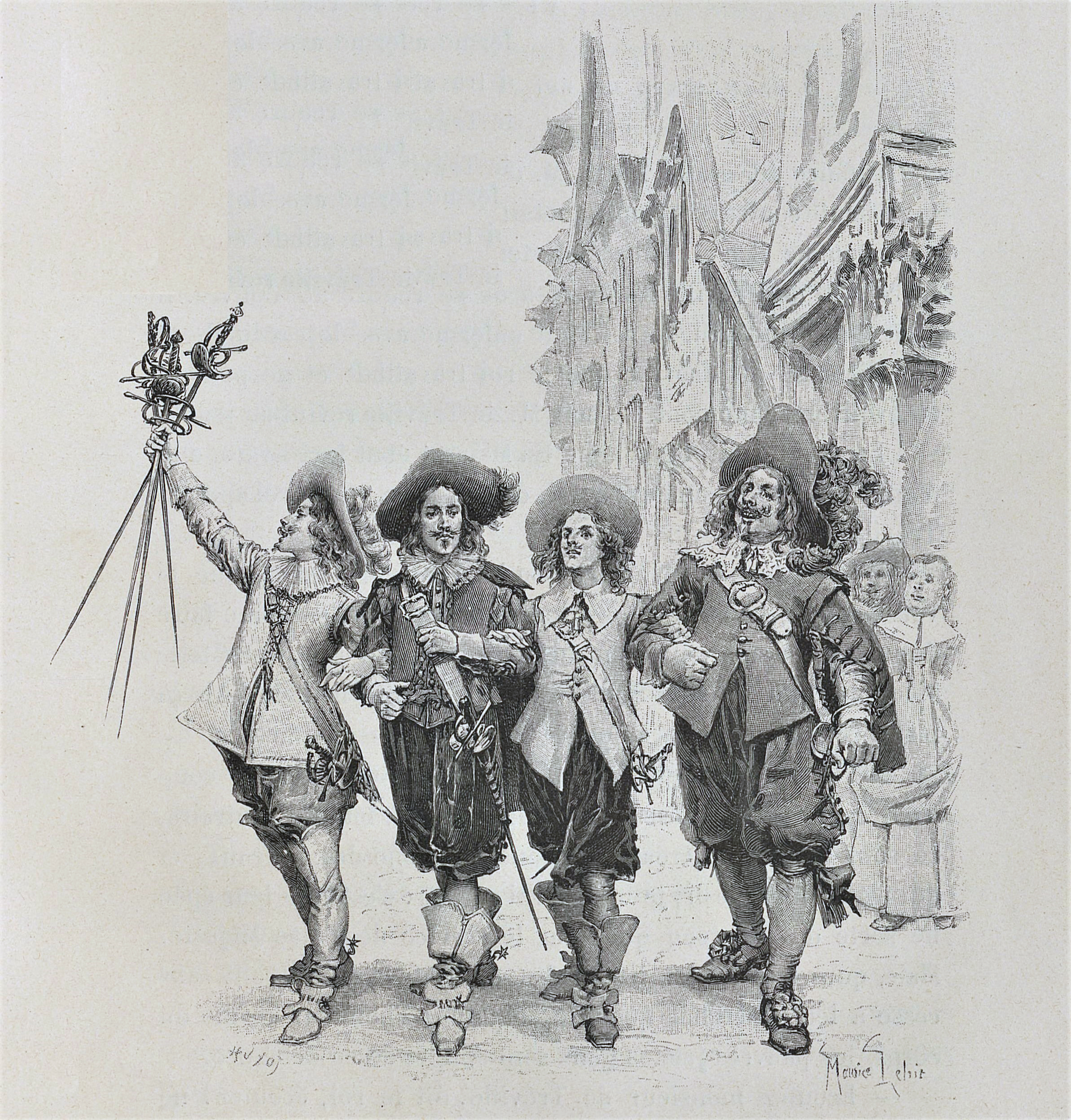“St. Mark’s Square lies at the southernmost tip of Venice’s Grand Canal…”
The Grand Canal in Venice forms one of the major water-traffic corridors in the city. At one end, the canal leads into the lagoon near the Santa Lucia railway station. At the other, it leads into Saint Mark Basin.
Dogana da Mar-Maritime Customs Office
“…the austere triangular fortress of Dogana da Mar-the Maritime Customs Office-whose watchtower once guarded Venice against foreign invasion.”
The Dogana da Mar, Venice’s old customs building, is now an art museum called the Punta della Dogana.
“…everything from luxury yachts, to tankers….”
A tanker is a large merchant vessel designed to transport liquids in bulk. For example: oil tanker.
“…to private sailboats, to massive cruise liners.”
Also known as a cruise ship, a cruise liner is a large passenger ship used for pleasure voyages. The voyage, ship amenities, and destinations are all included in the experience.
“…dozens of gondolas were making this same crossing…”
“…piloted by a sure-footed gondolier…”
A gondola is a flat-bottomed Venetian rowing boat. They are a traditional mode of transportation in the Venetian lagoons. The gondolier is the man who propels the gondola. Langdon, Sienna, and Ferris take a gondola propelled by Maurizio, in order to get to the Doge’s Palace.
“…attached to the right-hand gunwale.”
The gunwale is the top edge of the side of a boat. In other boats, not a gondola, it was designed to accommodate the stresses imposed by the use of artillery.
“…the scythelike decoration that protruded from the bow of every gondola in Venice had a symbolic meaning.”
This word is used to describe the gondola’s shape as looking similar to that of a scythe.
“…atop which a golden Archangel Gabriel peered down from a dizzying three hundred feet.”
Archangel Gabriel is an angel who typically serves as a messenger sent from God to certain people. He sits atop the spire of St. Mark’s bell tower.
“…the towering Campanile di San Marco served as a navigational beacon to all who ventured into Venice’s maze of canals and passageways…”
Campanile di San Marco, also known as the St Mark’s Campanile is the bell tower of St. Mark’s Basilica in Venice, Italy. It is one of the most recognizable symbols in Venice, and located in the Piazza San Marco.
“Visitors to Venice could experience the city’s inimitable atmosphere in any number of breathtaking locales….”
Means that something is incapable of being duplicated or imitated. It is unique.
“……ran from the old Arsenal all the way to St. Mark’s Square.”
The Venetian Arsenal was a complex cluster of shipyards and armories that was responsible for the bulk of Venice’s naval power in the middle part of the second millennium AD.
“…Langdon’s favorite had always been the Riva degli Schiavoni.”
The Riva Degli Schiavoni is a a promenade on the waterfront at St. Mark’s Basin.
“…even the home church of Antonio Vivaldi…”
Antonio Vivaldi was a Catholic priest and violinist who was also recognized as one of the greatest Baroque composers in the world. His best work is a series of violin concertos known as The Four Seasons.
“…boatbuilders smeared hot pitch on their unsound vessels to plug the holes.”
Hot pitch was an early thermal weapon used in warfare to destroy or damage enemy personnel, fortifications or territories. It was also used by boatbuilders to plug the holes in their vessels.
“…just twice the size of Central Park in New York..”
A public park at the center of Manhattan in New York City, Central park is the most visited urban park in the United States.
“A perfect example of Venetian Gothic architecture, the palace was an exercise in understated elegance.”
A style of architecture that flourished during the high and late medieval period. It originated in 12th-century France and is characterized by a pointed arch, the ribbed vault and the flying buttress.
“…the addition of porticos, columns…”
A portico is a porch leading to the entrance of a building, with a roof structure over a walkway, supported by columns or enclosed walls.
“…a loggia…”
A loggia is a gallery or corridor at ground level that is on one side the facade of a building and open to the air on other side, which is supposed by columns or pierced openings in the wall.
“…quatrefoil perforations.”
A quatrefoil is a type of decorative framework that consists of a symmetrical shape which forms the overall outline of four partially overlapping circles of the same diameter. The word quatrefoil means “four leaves”.
“…the Alhambra in Spain.”
The Alhambra is a palace and fortress in Granada, Spain.
Il Ponte dei Sospiri – The Bridge of Sighs
“‘Il Ponte dei Sospiri….A famous Venetian bridge.'”
The Bridge of Sighs passes over the Rio di Palazzo and connects the New Prison to the interrogation rooms in the Doge’s Palace. It was the last view of Venice that convicts saw before their imprisonment. It is said that lovers will be granted eternal love and bliss if they kiss on a gondola at sunset under the Bridge of Sighs as the bells of St Mark’s Camanile. This was a plot line for the movie A Little Romance.
“recalling one of his favorite boyhood movies, A Little Romance, which was based on the legend…”
A 1979 American romantic comedy film directed by George Roy Hill and starring Laurence Olivier, Theolonious Bernard, and Diane Lane. The plot surrounds a French boy and an American girl who meet in Paris and have a romantic journey to Venice where they hope to seal their lives forever with a kiss beneath the Bridge of Sighs at sunset.

“…starred an adorable fourteen-year-old newcomer named Diane Lane, on whom Langdon had immediately developed a boyhood crush…”
An American film actress born and raised in New York and made her screen debut in the 1979 film, A Little Romance.
“…the most terrifying cells were not those at water level….but those next door on the top floor of the palace proper-called piombi after their lead-tiled roofs…”
Meaning lead in English, piombi is the name of the former prison in the Doge’s Palace. It refers to its position directly under the roof of the palace, which was covered with slabs of lead. In the winter, these slabs let the cold pass and in the summer, the act as a catalyst for the heat.
“The great lover Casanova had once been a prisoner in the piombi…”
Giacomo Girolamo Casanova was an Italian adventurer and author from Venice. He became famous for his elaborate affairs with women, so much that his name is now synonymous with “womanizer”.
Sta’attento
Be careful!
Mooring post
“Maurizio threw a line around a mooring post and leaped ashore…”
Also known as a bollard, it is a short vertical post meant to allow a ship to moor to a dock.
“…as if he were auditioning for a swashbuckling movie.”
The term swashbuckling emerged in the 16th century and has since been used as a term for pirates and swordsmen. It derives from a fighting style using a side-sword with a buckler.
![]() This page was written by Karina Toy
This page was written by Karina Toy

